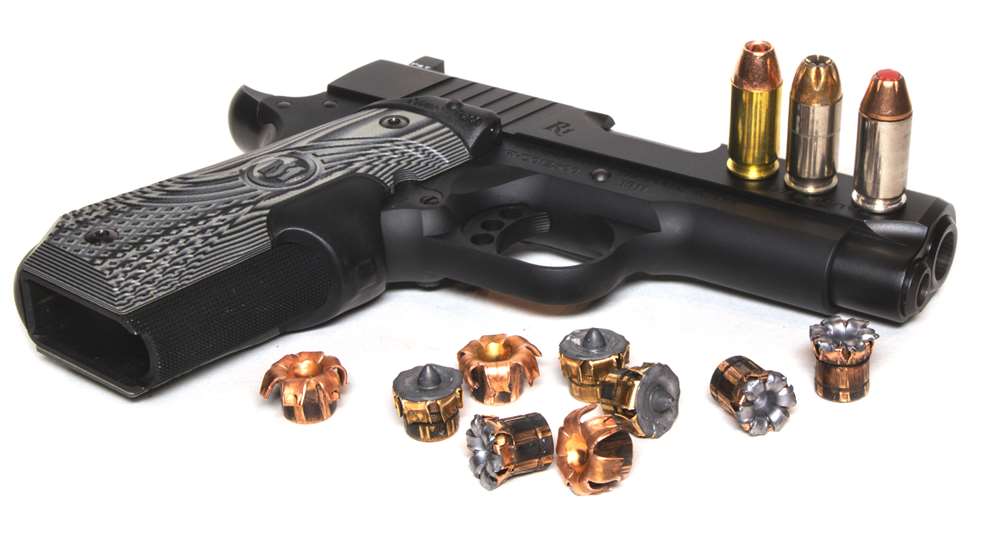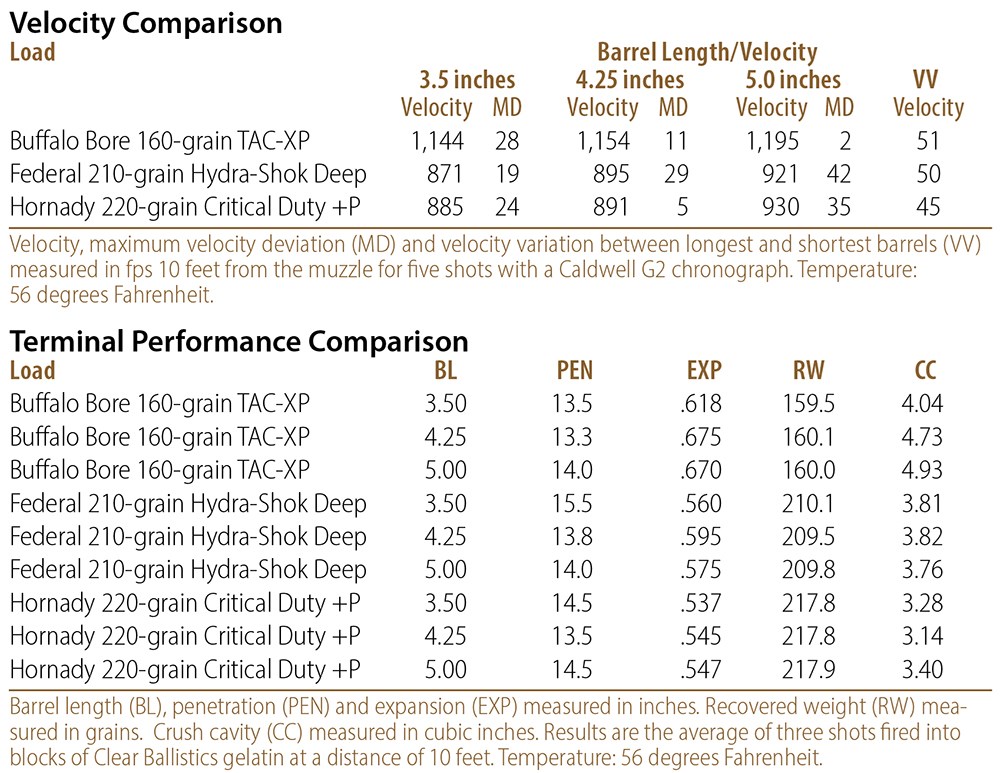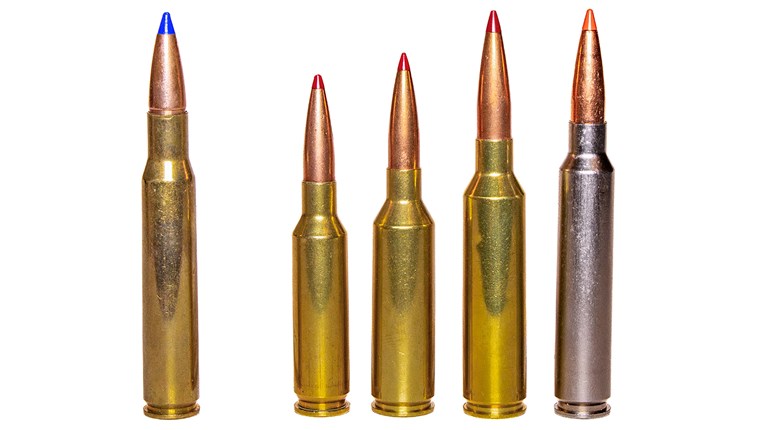
How much does barrel length matter? For the .45 ACP, it turns out that there’s not much difference across barrel lengths when using loads designed for use in commonly sized handguns.
Subcompact pistols are what’s hot. Those are the guns consumers are asking for, and they’re the guns manufacturers are building. The reason should be obvious: the smaller a pistol is, the easier it is to conceal. (The smaller a pistol is, the harder it is to shoot, but that seems to be of little concern to most people these days.) Some are concerned that these miniature handguns with abbreviated barrels may not produce enough velocity to cause proper bullet function in terms of upset (i.e. consistent, controlled expansion). This is a legitimate inquiry; concealability and carry comfort are important, but how much performance are you willing to sacrifice to get it?
Velocity is the driving force behind terminal performance. For expanding/deforming bullets to work as intended, they must reach an impact-velocity threshold. Shorter barrels reduce velocity, and the worry is that they might allow velocity to drop below that threshold. This is of a particular concern with lower velocity cartridges like the .45 ACP. With the short barrels found on ultracompact .45 ACPs, velocities of some of the heavier bullet loads can fall below 800 fps. For this reason, some manufactures make short-barrel loads specifically for these itty-bitty guns.
Are those short-barrel loads necessary and just how much velocity will be lost with short-barrel .45 ACP handguns? I thought I’d conduct an experiment to find out. I picked out three .45 ACP loads that are highly regarded for their terminal performance and I fired them out of three different handguns. One had a 5-inch barrel, another sported a 4.25-inch barrel and the third had a 3.5-inch barrel. Five shots were fired over a chronograph with each load, and the results might surprise you. But, before you begin to digest the data, understand that just because a load generates a certain velocity in one handgun of a specific barrel length, does not mean it will generate the same velocity in another handgun with the same barrel length. From different handguns with the same length barrel, average-velocity variations as high as 50 fps are possible.
For starters, the average velocity loss from the 5-inch to 3.5-inch barrel with all loads tested was only 48.66 fps. Considering that the average maximum-velocity deviation for all the loads was about half that, and that the maximum velocity deviation for one load when fired from a 5-inch barrel was nearly equal to that, one might conclude that at least for the three loads tested, velocity loss from short-barreled .45 ACPs is insignificant.
But as mentioned, the concern is not just about speed loss—a certain amount of velocity is needed to drive expansion, and a bullet must impact above that velocity threshold for it to upset/deform. So, while it appeared .45 ACP velocity loss with the shorter barrels was inconsequential, the only way to be sure was to conduct some terminal-performance testing. This would demonstrate if the slower-moving bullets could impact at a fast-enough velocity to deform, and how much the slower velocities might impact bullet upset, penetration and the size of the crush cavities created.
To discover this, I fired three rounds of each load into blocks of Clear Ballistics gelatin. With each shot, the total-penetration depth, upset diameter of the bullet and the bullet’s retained weight were measured. (Retained weight really
has no bearing on terminal performance. Yes, bullet weight influences penetration, but once the desired depth has been reached, it does not matter what the bullet weighs). Also, by using the diameter of the bullet and its penetration depth, the volume of the crush cavity was calculated as if it were a cylinder.
Clearly, all the loads fired from each barrel length produced enough velocity for the bullets to work—deform—as they were intended. In fact, the recovered bullets of the same load were nearly indistinguishable. Because of this, and because of the minimal differences in impact velocities, the penetration depth and crush cavity for each load, regardless of barrel length, were very similar as well.
Also of note, especially for those who worship the FBI and everything associated with its bullet-testing protocol, every load fired—regardless of barrel length—exceeded the bureau’s recommended minimum-penetration depth of 12 inches. Not only that, none of the loads exceeded its maximum-penetration depth of 18 inches (now granted, my testing wasn’t identical to the FBI protocol). Over-penetration is a byproduct of limited expansion, which can occur when velocities drop below the deformation threshold. Yes, you read that correctly: With expanding bullets, excessive penetration is often caused by slow velocities.
What is undeniable is the fact that all three of these loads seem to be barrel-length blind. Similarly, it’s clear that ammunition manufacturers are solving the riddle when it comes to defensive-handgun ammunition. Not only were these three loads from three different manufacturers, the construction of the bullets used was also quite different.
In no way am I suggesting that all defensive-handgun loads for the .45 ACP are immune to reduced terminal performance due to velocity reductions that can be experienced with a shorter barrel. Manufacturers offer specific short-barrel loads for a reason. Though the three loads tested seemed to not care about barrel length, the only way to be sure if a load will perform out of your short-barrel .45 ACP is to conduct a similar experiment on your own. A single block of Clear Ballistics gelatin ($130) is a small price to pay for some measure of assurance.






































